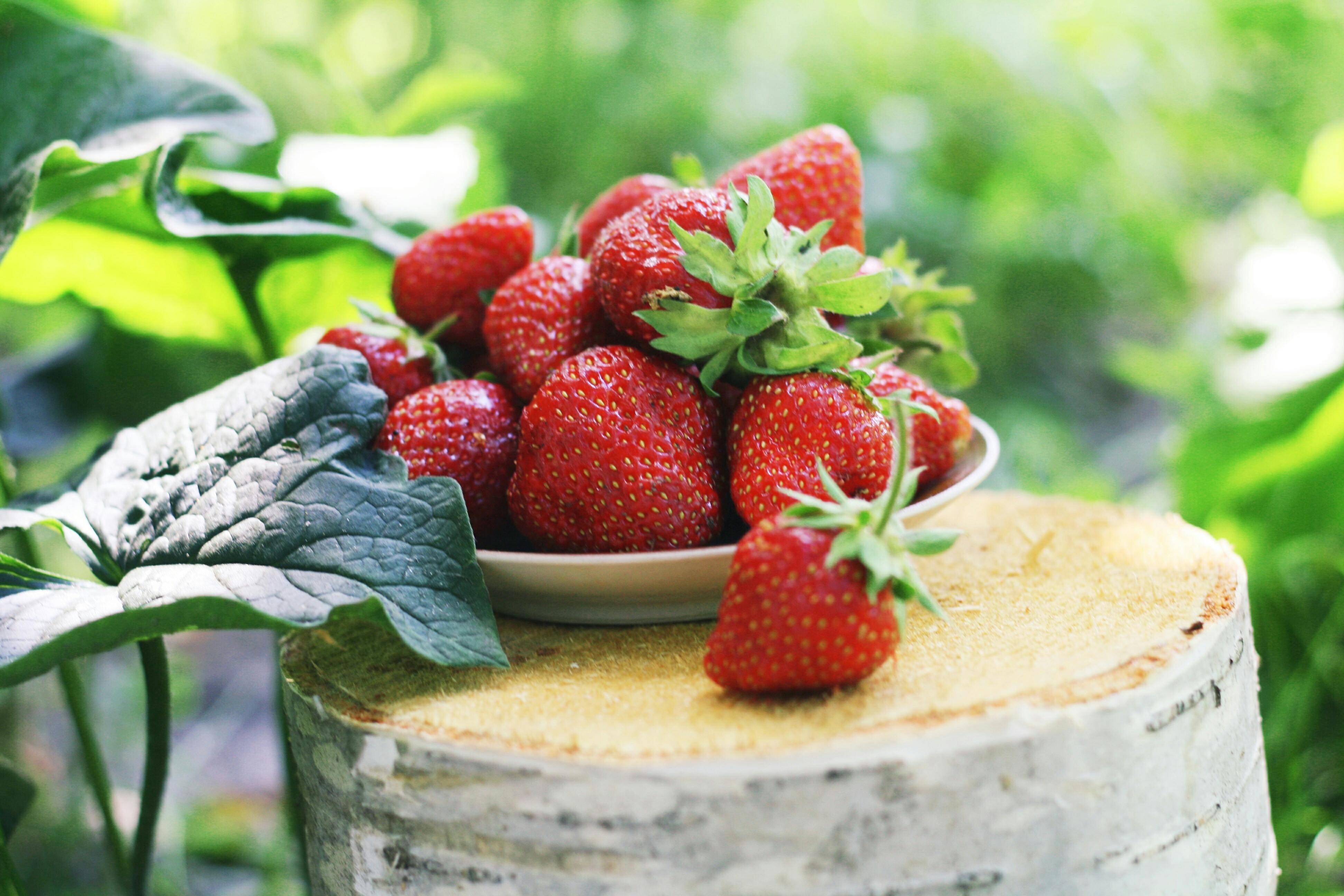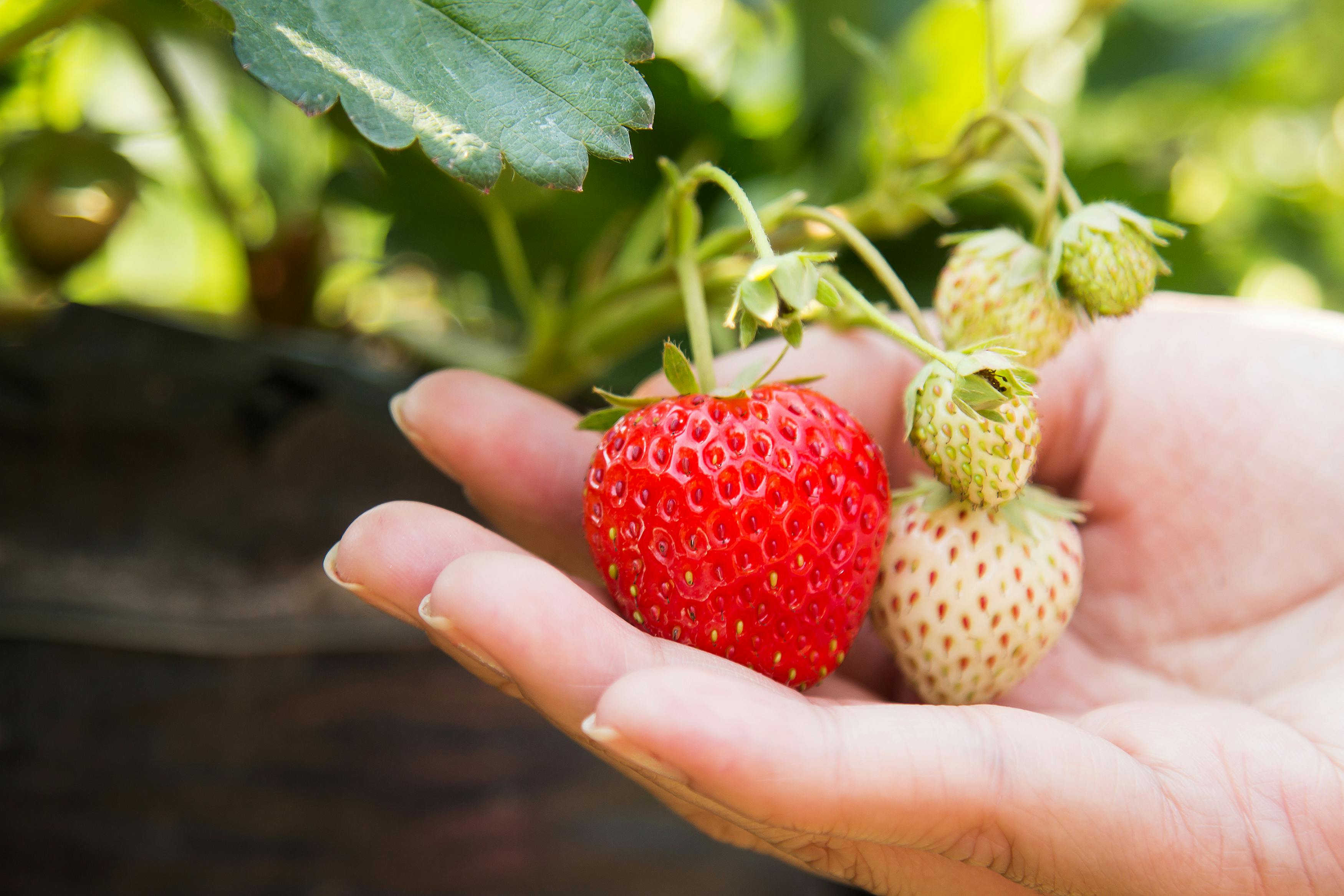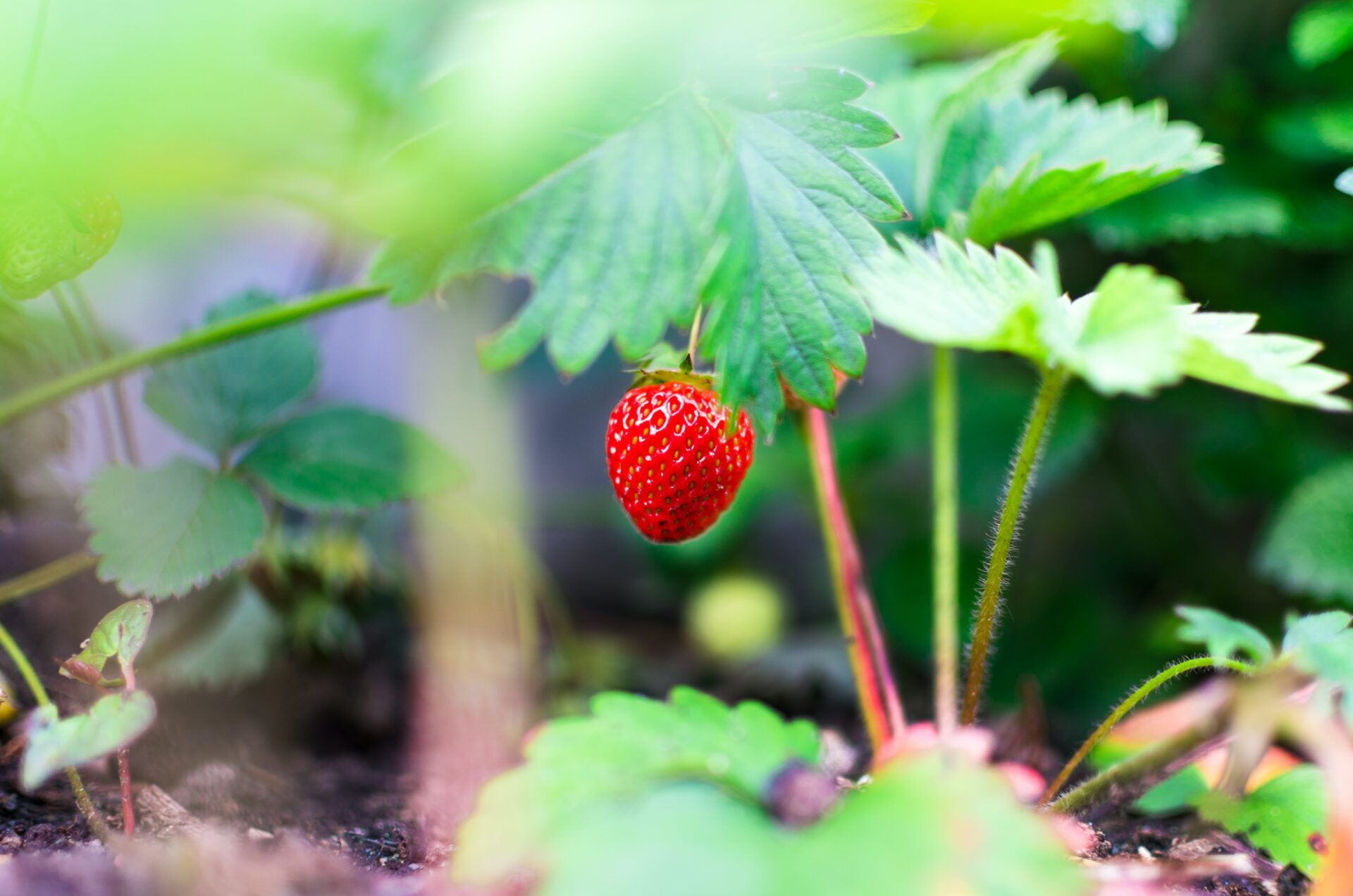Strawberries are a delicious and healthy treat, and they are well known for their red color. But have you ever wondered why strawberry leaves turn red? It turns out that this color change is a natural process that helps the plant protect itself and thrive. This article will explain why strawberry leaves turn red, the benefits of this process, and how to keep your strawberries looking their best.Strawberry leaves are naturally red in color due to the presence of anthocyanins. Anthocyanins are a class of water-soluble pigments that provide a range of colors, including red, purple and blue. They are found in many plant species, including strawberries. Anthocyanins accumulate in the leaves when they are exposed to sunlight, giving them the characteristic red color. The color is also thought to protect the leaves from environmental stressors, such as heat and intense light. In addition, some studies suggest that anthocyanins may act as an antioxidant in strawberry plants, protecting them from disease and improving their overall health.
Is Red Color in Strawberry Leaves Natural?
The red color in strawberry leaves is a natural occurrence in some species of strawberry. This color is caused by the presence of anthocyanins, which are a type of pigment found in many plants. Anthocyanins are responsible for the red, purple, and blue hues found in many fruits and vegetables.
In strawberries, the anthocyanins are present at higher levels than other fruits and vegetables. As a result, it is quite common to find red-tinted leaves on some varieties of strawberries. The level of anthocyanin can vary depending on the variety and the growing conditions of the plant. In some cases, it can be quite noticeable and even give the leaves an almost reddish-purple hue.
The presence of anthocyanins is not only responsible for the color but also has various health benefits as well. Anthocyanins have been found to have antioxidant properties which can help protect against cell damage from free radicals that could potentially cause cancer or other diseases. Additionally, they may also help reduce inflammation and improve cardiovascular health.
Overall, the red color in strawberry leaves is entirely natural and is caused by higher levels of anthocyanins in certain varieties of strawberries. This pigment has numerous health benefits which make it a valuable addition to any diet.
How Does Environment Influence Color of Strawberry Leaves?
Strawberry leaves are known to be either dark green or reddish-purple in color. The color of the leaves is an indication of their health and can be affected by environmental factors such as light, temperature, humidity, water availability and soil nutrients.
Light is a major environmental factor that affects the color of strawberry leaves. In general, more light will cause the leaves to take on a darker shade of green while less light will cause them to turn reddish-purple. Darker colors absorb more sunlight and can help protect the plant from over heating in warmer climates.
Temperature also plays a role in influencing the color of strawberry leaves. Warmer temperatures tend to cause the leaves to take on a darker shade of green while colder temperatures can make them turn purple or even black. This is due to changes in pigment production that occur in response to temperature changes.
Humidity has an effect on strawberry leaf color as well. High levels of humidity can cause the leaves to become more reddish-purple whereas low levels of humidity can make them take on a darker shade of green.
Water availability is another factor that affects the color of strawberry leaves. Plants need water for photosynthesis and other metabolic processes, so when there is insufficient water available, the plant may produce less chlorophyll which causes the leaves to take on a purplish hue as less light is absorbed by them.
Finally, soil nutrients also influence leaf color in strawberries. If there are not enough nutrients available in the soil, then this can result in yellowing or browning of the foliage due to a lack of chlorophyll production. This is why it’s important for gardeners to make sure they’re providing their plants with all the necessary nutrients for optimal growth and health.
In summary, environment plays an important role in influencing leaf color in strawberries; factors such as light, temperature, humidity and nutrient availability all have an effect on how dark or purple-tinged their foliage will appear depending on how they are managed by gardeners or growers.
Role of Genetics in Changing Color of Strawberry Leaves
The color of strawberry leaves can vary from dark green to red. This is due to the role of genetics in determining the color of the leaves. Genetics plays an important role in determining the color of strawberry leaves as it influences the amount and type of pigmentation that is produced in the leaf.
The production of pigments is affected by a variety of factors such as light intensity, temperature, humidity and soil composition. The amount and type of pigment produced can be influenced by genetic factors such as gene mutation or genetic recombination. By manipulating these genetic factors, it is possible to produce different colors in strawberry leaves.
Genetic engineering has been used to produce plants with different colored leaves. This has been achieved by introducing new genes or by altering existing genes. For example, one study used genetic engineering to create a plant with red-colored leaves. This was achieved by introducing a gene from petunia that produces anthocyanin, a pigment responsible for producing red color in petunia flowers.
Genetic engineering has also been used to produce plants with yellow-colored leaves. In this case, scientists introduced a gene from maize that produces carotenoid, a pigment responsible for producing yellow color in maize kernels and husks. By introducing this gene into strawberry plants, they were able to produce plants with yellow-colored leaves instead of green ones.
In addition to genetic engineering, other techniques such as grafting and cross-pollination can also be used to produce different colors in strawberry leaves. Grafting involves taking a branch from one plant and attaching it onto another plant so that they will grow together as one plant. This technique has been used to combine two plants with different colored leaves so that they will produce offspring with both colors on their leaves. Cross-pollination involves exchanging pollen between two different varieties or species of plants so that their offspring will have a combination of traits from both parents.
Overall, genetics plays an important role in determining the color of strawberry leaves by influencing the amount and type of pigmentation that is produced in the leaf. By manipulating genetic factors through techniques such as genetic engineering, grafting and cross-pollination, it is possible to produce different colors in strawberry leaves.
Nutrients Necessary for Maintaining Red Color of Strawberry Leaves
Strawberry leaves can turn red in color when exposed to sunlight, indicating that they contain anthocyanin pigments, which are responsible for the reddish hue of the leaves. In order to maintain the red color of strawberry leaves, it is important to ensure that the plants are provided with a balanced diet of essential nutrients. The main nutrients required for maintaining strawberry leaf color include nitrogen, phosphorus, potassium, calcium, magnesium, and sulfur.
Nitrogen is an essential macronutrient that plays an important role in photosynthesis and growth. It is also involved in the production of chlorophyll and other pigments responsible for leaf coloring. Phosphorus helps plants absorb nitrogen more efficiently and also aids in root development. Potassium helps increase crop yields and improves root health and disease resistance. Calcium aids in cell division and strengthens cell walls while magnesium is necessary for photosynthesis and protein synthesis. Finally, sulfur helps promote root growth as well as enhance flower production and fruit quality.
In addition to these essential nutrients, other trace elements like zinc, iron, copper, boron, manganese, molybdenum may also be required by strawberry plants for optimal growth and development. Regular soil testing can help identify any nutrient deficiencies or imbalances that may be impacting the maintenance of red color of strawberry leaves. Applying a balanced fertilizer mix containing all these nutrients can help ensure that strawberry plants receive an adequate supply of essential nutrients needed to maintain their red leaf color.

How Does Temperature Affect the Color of Strawberry Leaves?
Temperature can have a major effect on the color of strawberry leaves. When temperatures are warm, the leaves will tend to be green. This is because warm temperatures allow for photosynthesis to take place and the production of chlorophyll, which gives leaves their green color. As temperatures drop, however, chlorophyll production slows down and other pigments in the leaves become more visible. This can result in a change of color from green to yellow or even red.
The amount of light a plant receives can also affect the color of its leaves. When plants receive less light, they will generally produce more anthocyanins (red pigments) in an effort to absorb more energy from the sun. This can cause strawberry leaves to turn red or pink in response to lower levels of light and cooler temperatures. In addition, environmental stressors such as drought or extreme temperatures can also affect leaf color by causing anthocyanin production.
Strawberry leaves are sensitive to temperature changes and environmental stressors because they are thin and delicate compared to other plants. As such, it is important for gardeners and farmers alike to monitor their surroundings carefully in order to ensure that plants have adequate protection from extreme weather events or temperature fluctuations that could damage their crops. By monitoring temperature levels around strawberry plants, gardeners can help ensure that their crops stay healthy and productive throughout the growing season.
Light Intensity Impact on Color of Strawberry Leaves
Light intensity plays an important role in the color of strawberry leaves. The quantity and quality of light that strawberry plants receive determines the amount of chlorophyll they will produce, which in turn affects the color of the leaves. When there is ample sunlight, strawberry leaves are a light green, while when there is less sun exposure, they become a darker green. Chlorophyll is necessary for photosynthesis to occur and it absorbs light energy from the sun to use in the process. Therefore, when a plant receives more light, it will produce more chlorophyll and appear greener.
Light intensity also affects how much anthocyanin is produced by the strawberry leaves. Anthocyanins are a type of pigment that give strawberries their red coloration. When there is high amounts of light, less anthocyanin is produced and the leaves remain green in color. On the other hand, when there is low light intensity or shade conditions, more anthocyanin will be produced and give the leaves a reddish hue. Additionally, when temperatures drop at night or during winter months, more anthocyanin accumulates in strawberry plants which can also result in reddish colored leaves.
Overall, light intensity has a significant impact on the color of strawberry leaves as it affects how much chlorophyll and anthocyanin are produced by plants. When there is ample sunlight present, the leaves are green; whereas when there is less sunshine or cold temperatures then red hues may appear on the foliage.
Wild versus Cultivated Strawberries
When comparing wild and cultivated strawberries, a key difference is their leaf color. Wild strawberries tend to have lighter green leaves with a more jagged shape. Cultivated strawberries, on the other hand, have darker green leaves with a smoother shape. The color of the leaves can be an indicator of the type of strawberry plant that it is.
Wild strawberries tend to have a shorter growing season than cultivated varieties. This can be beneficial if you are looking for a variety of fruit that will ripen quickly and provide an abundant harvest in a short amount of time. Wild plants may also need less pruning or fertilization than cultivated varieties since they are adapted to being grown in their natural environment.
The taste of wild and cultivated strawberries can also vary significantly. Wild strawberries tend to be more tart than their cultivated counterparts, while cultivated varieties are generally sweeter due to crossbreeding and careful selection for desired traits like size and flavor.
Overall, the differences between wild and cultivated strawberries in terms of leaf color, growth season, and taste can give you insight into which type of strawberry plant is best for your needs. Whether you’re looking for a short-term harvest or something that will last longer in your garden, understanding the characteristics associated with each type can help you make an informed decision about what you’d like to grow in your garden or buy from the grocery store.

Conclusion
The color of strawberry leaves turning red is due to the anthocyanins content in the leaves. Anthocyanins are plant pigments that are responsible for red, blue and purple colors in plants. The strawberry plant produces these pigments to protect itself from harsh environmental conditions such as cold temperature, strong winds, and intense sunlight. The red color of the leaves also serves as an adaptation for attracting pollinators and dispersing its fruits. Thus, it can be concluded that the change in color of strawberry leaves from green to red is a natural process that helps the plant survive and reproduce.
In conclusion, strawberry leaves turn red due to the presence of anthocyanins which protect it from unfavorable environmental conditions and also help in pollination and fruit dispersal. This phenomenon is an integral part of the life cycle of a strawberry plant and its presence ensures the survival of this species.



